
Performance art - provocative art with profound meaning
Performance art is a form of visual art and a branch of actionism in which the artwork consists of a series of actions by the artist or a group of invited individuals following a pre-planned script. Four defining elements hold significant importance in a performance: the venue and time of the event, the artist themselves, and the relationship between the artist and the audience.
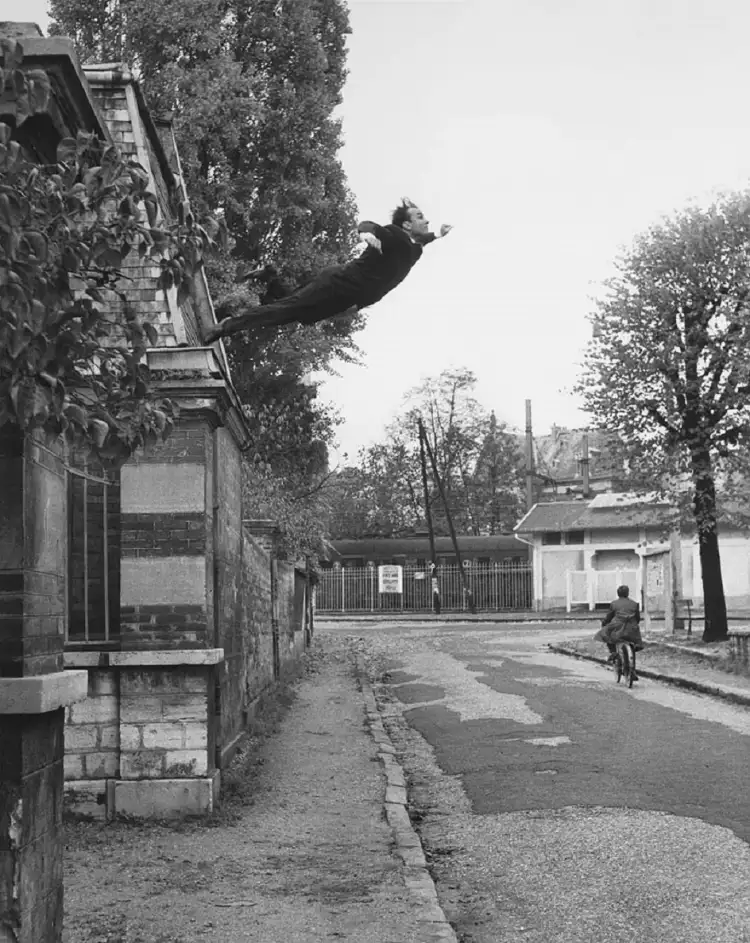 Performance. Yves Klein. Le Saut dans le vide, 1960
Performance. Yves Klein. Le Saut dans le vide, 1960
In essence, performance art shares similarities with theatrical art, but unlike the latter, the artist selects the most unexpected locations as the stage, and the audience often actively participates in the performance.
Types and Characteristics of Performance Art
Performance art is an original and often highly provocative means of engaging the audience. It can boldly be classified as non-material art because the artwork itself is not an object, such as a painting or sculpture.
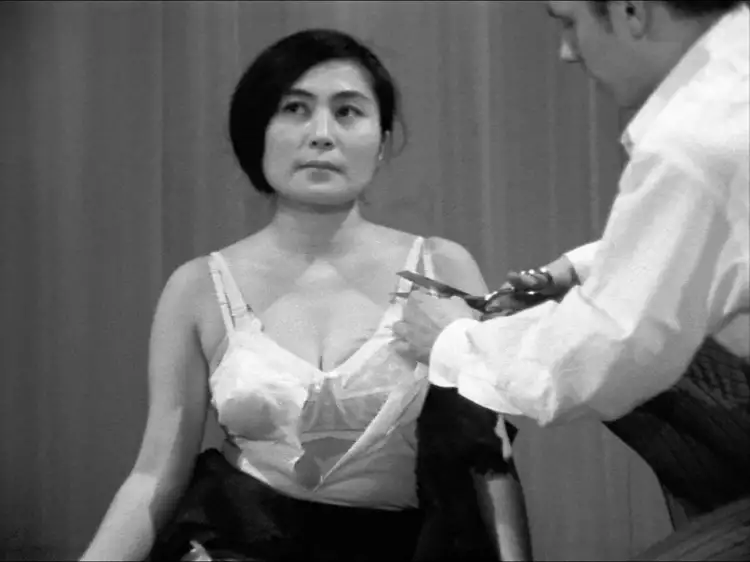 Performance. Yoko Ono. Cut Piece, 1964
Performance. Yoko Ono. Cut Piece, 1964
Performance art represents a blend of various styles and genres, incorporating elements of dance, painting, and acting. While spectators often perceive the performance as entertaining, the artist embeds profound meaning into it.
In art, there are several types of performance:
- Individual performance. The artist independently executes all actions, interacting with surrounding objects and items.
- Collective performance. Involves a group of actors under the guidance of the author.
- Performance art. The human body serves as the basis for creating the artwork.
- Folk performance. A mass presentation involving a large number of spectators as participants, such as processions, demonstrations, or other collective actions (flash mobs).
- Internet performance. An action broadcast online via video equipment to viewers worldwide.
- Quest performance. Essentially a theatrical presentation (game) with scenery and a plot. Hired actors interact with participants, helping them experience strong emotional impressions and a sense of the reality of the unfolding event.
 Performance. Joseph Beuys. I Like America and America Likes Me, 1974
Performance. Joseph Beuys. I Like America and America Likes Me, 1974
Performance art completely defies the boundaries of traditional art. In its manifestation, the artist establishes a unique relationship with the audience, imbues the action with hidden meaning, and skillfully coordinates the unfolding events. Through performance art, artists engage in a dialogue with authority, express protest against its actions, and address society's relevant social, political, and ideological aspects.
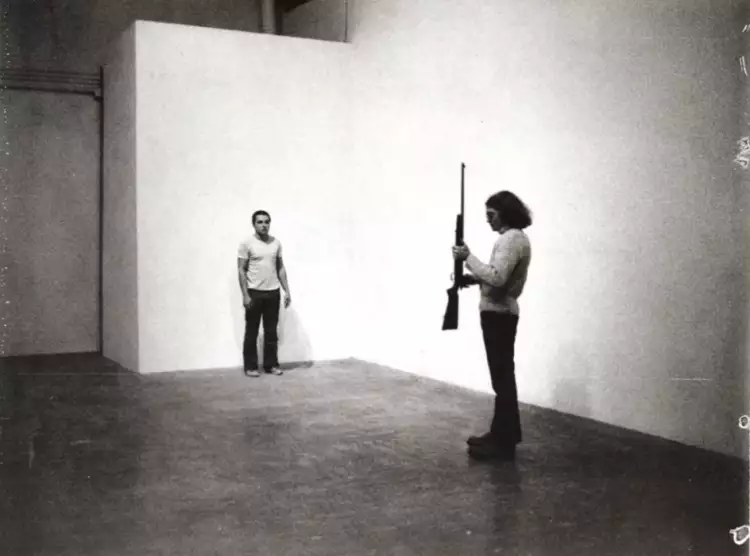 Performance. Chris Burden. Shoot, 1971
Performance. Chris Burden. Shoot, 1971
History of Performance Art
The roots of performance art can be traced back to the early 20th century, specifically in two avant-garde art movements: Dadaism and Futurism. Even then, revolutionarily inclined artists sought to create a new form of performing arts.
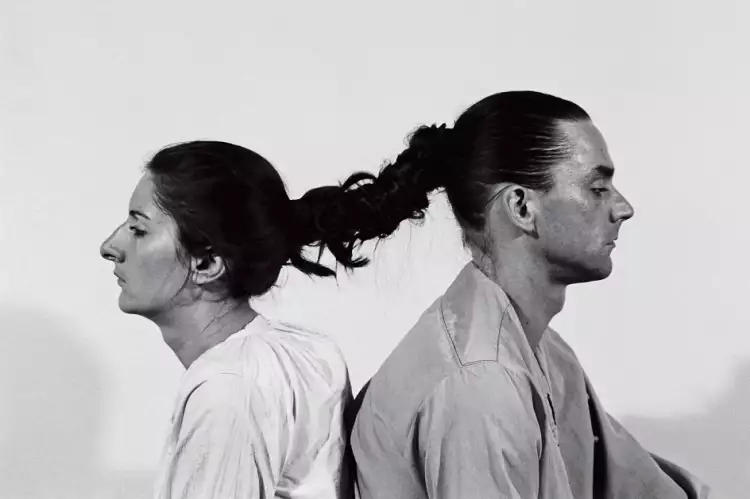 Performance. Marina Abramović. In Relation in Time, 1977
Performance. Marina Abramović. In Relation in Time, 1977
In Zurich in 1916, the famous "Cabaret Voltaire" opened, hosting innovative performances involving musicians, painters, and poets who were supporters of Dadaism. Futurists also organized meetings and conferences in public places, where they propagated their ideas. These were the early attempts to create performance art with active audience participation and numerous scandalous antics.
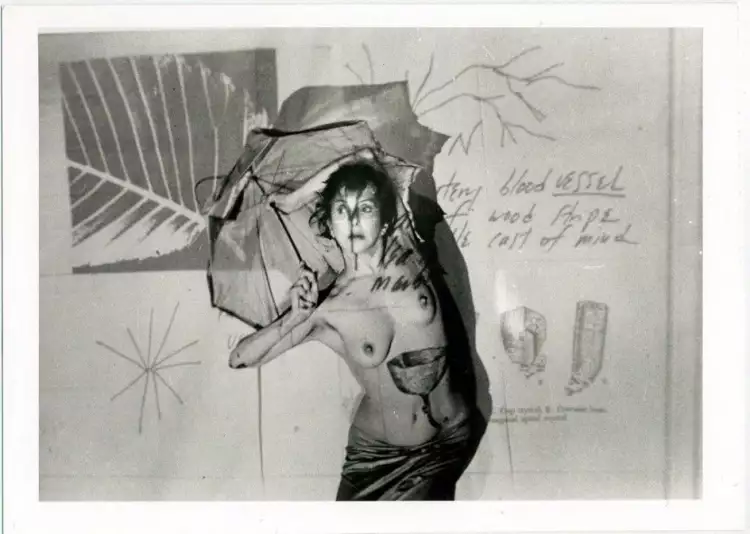 Performance. Carolee Schneemann. Fresh Blood, 1986
Performance. Carolee Schneemann. Fresh Blood, 1986
In the mid-1940s, in the United States, within the circle of abstract expressionism followers, action painting emerged. Its proponents believed that the main focus in creating paintings should be on the process of creation, not the end result.
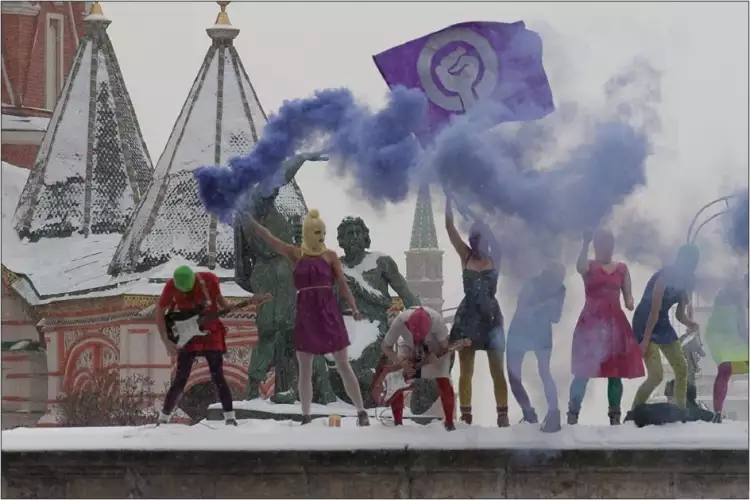 Performance. Pussy Riot. Putin Zassal, 2012
Performance. Pussy Riot. Putin Zassal, 2012
In the early 1960s, performance art was fully born as a form of visual art. Its founding figure can rightfully be considered the brilliant French artist Yves Klein. He created numerous performances that shocked the European audience.
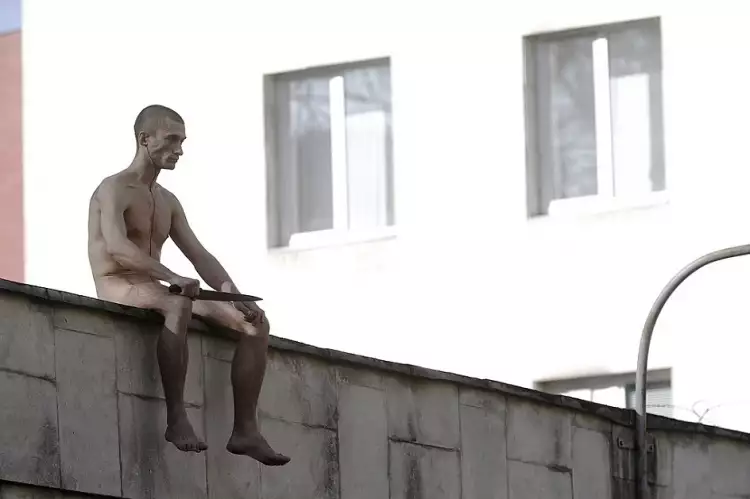 Performance. Petr Pavlensky. Segregation, 2014
Performance. Petr Pavlensky. Segregation, 2014
From this moment, performance art began to rapidly gain popularity in creative circles. Artists actively experimented with materials and proposed original creative ideas. Extravagant performances became fashionable, and their creators became globally famous.
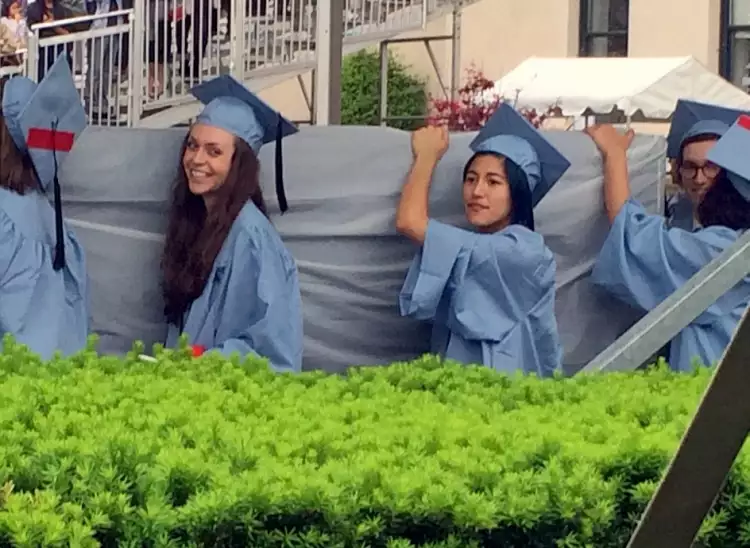 Performance. Emma Sulkowicz. Carry That Weight, 2015
Performance. Emma Sulkowicz. Carry That Weight, 2015
Interest in performance art only intensified with each subsequent decade. Since the early 1990s, leading museums worldwide began dedicating separate exhibitions and retrospectives to this new form of art. Talented artists gained not only numerous admirers but also patrons among the wealthiest individuals on our planet.
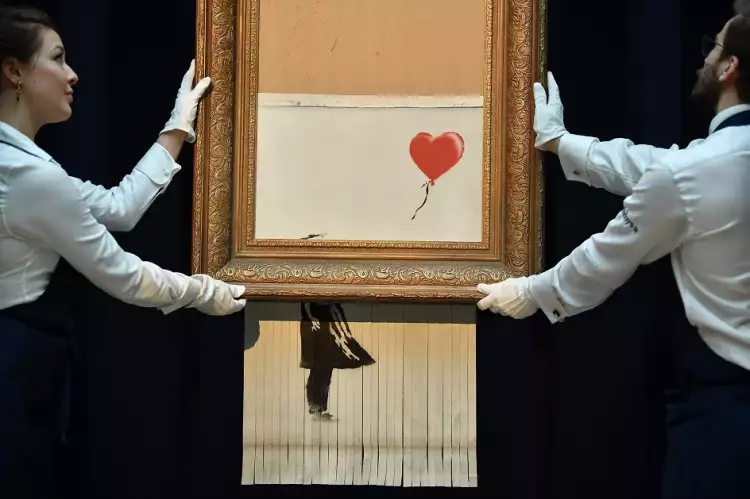 Performance. Banksy. Destruction of the painting Girl with Balloon at Sotheby's auction, 2015
Performance. Banksy. Destruction of the painting Girl with Balloon at Sotheby's auction, 2015
Today, performance art is not just a recognized form of visual art. It is at the forefront of global culture, in the center of universal attention, and helps us look at life differently.
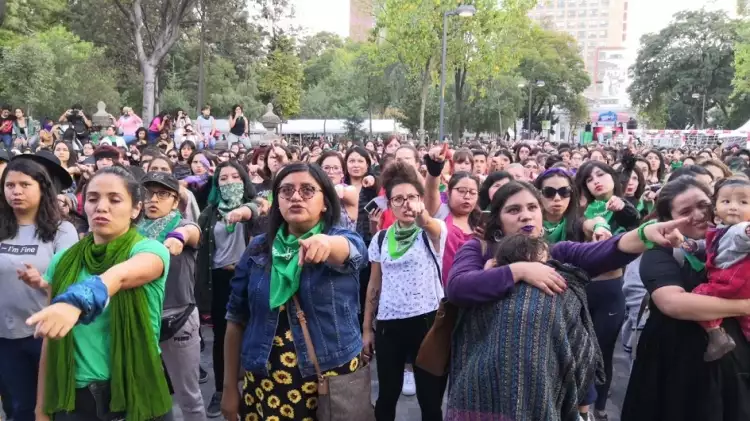 Performance. Women's mass performance in Mexico City. A Rapist in Your Path, 2019
Performance. Women's mass performance in Mexico City. A Rapist in Your Path, 2019
On the Very Important Lot platform, art enthusiasts can participate in art auctions and purchase antiques online. Our website also provides all visitors with a unique opportunity to directly buy paintings from talented contemporary artists.
 Baroque is an exquisite pearl of European culture: essence, developmental history, style features
Baroque is an exquisite pearl of European culture: essence, developmental history, style features  Pastel - a technique with unique possibilities in painting and graphics: types, history, artists
Pastel - a technique with unique possibilities in painting and graphics: types, history, artists 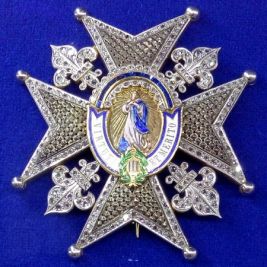 Order of Carlos III is the highest civilian award in Spain
Order of Carlos III is the highest civilian award in Spain 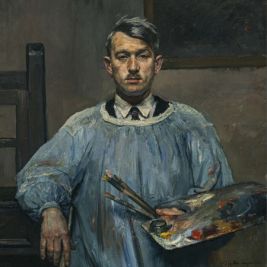 A colourful farmer Thomas Baumgartner
A colourful farmer Thomas Baumgartner 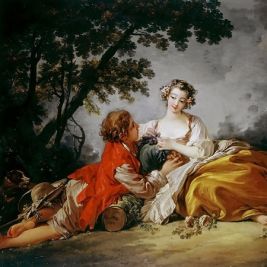 Rococo: Peasant Idylls of Court Painters
Rococo: Peasant Idylls of Court Painters 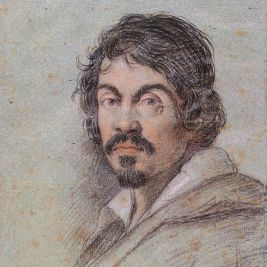 Caravaggio was a brilliant painter, an art innovator, and a thorough rebel
Caravaggio was a brilliant painter, an art innovator, and a thorough rebel  The painting "The Burning of the Houses of Lords and Commons" by William Turner is a dramatic depiction of a historical event
The painting "The Burning of the Houses of Lords and Commons" by William Turner is a dramatic depiction of a historical event 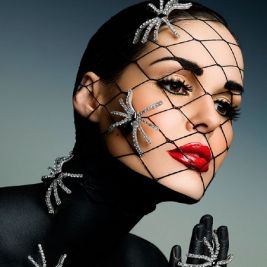 Glamour in photography is a beautiful genre with elements of elegance and luxury
Glamour in photography is a beautiful genre with elements of elegance and luxury 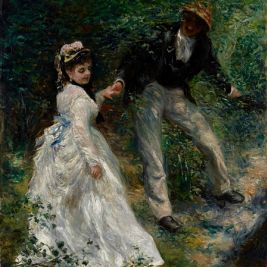 The painting "La Promenade" by Pierre-Auguste Renoir is an example of fleeting happiness
The painting "La Promenade" by Pierre-Auguste Renoir is an example of fleeting happiness 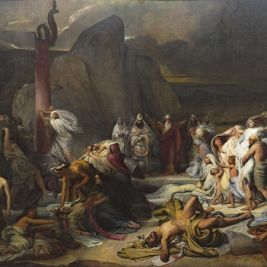 The painting "The Bronze Serpent" by Fyodor Bruni is an interpretation of an Old Testament story by a great master
The painting "The Bronze Serpent" by Fyodor Bruni is an interpretation of an Old Testament story by a great master